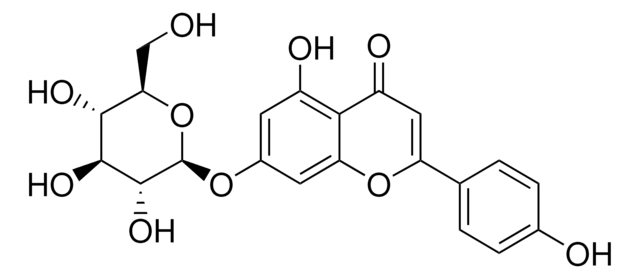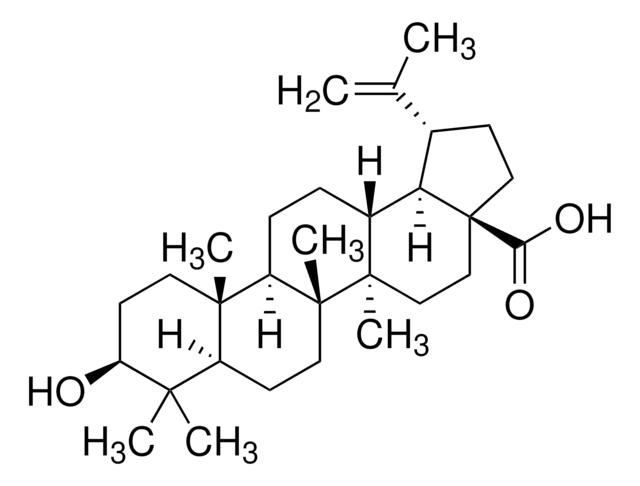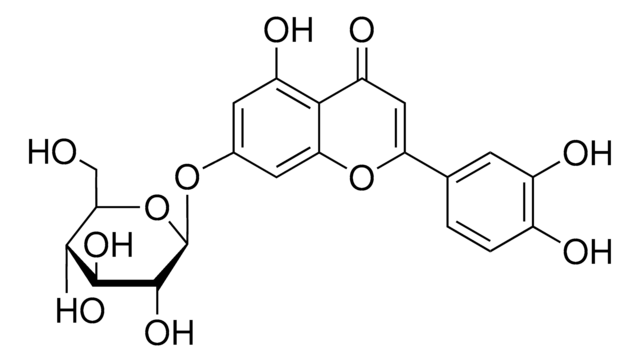42251
Apigenin
analytical standard
Synonym(e):
4′,5,7-Trihydroxy-flavon, 5,7-Dihydroxy-2-(4-hydroxyphenyl)-4-benzopyron
About This Item
Empfohlene Produkte
Qualität
analytical standard
Qualitätsniveau
Assay
≥99% (HPLC)
Haltbarkeit
limited shelf life, expiry date on the label
Methode(n)
HPLC: suitable
gas chromatography (GC): suitable
mp (Schmelzpunkt)
>300 °C (lit.)
Anwendung(en)
food and beverages
Format
neat
Lagertemp.
2-8°C
SMILES String
Oc1ccc(cc1)C2=CC(=O)c3c(O)cc(O)cc3O2
InChI
1S/C15H10O5/c16-9-3-1-8(2-4-9)13-7-12(19)15-11(18)5-10(17)6-14(15)20-13/h1-7,16-18H
InChIKey
KZNIFHPLKGYRTM-UHFFFAOYSA-N
Suchen Sie nach ähnlichen Produkten? Aufrufen Leitfaden zum Produktvergleich
Allgemeine Beschreibung
Apigenin can be found in a wide range of medicinal plants such as Achillea sp., Chamomilla sp., Equisetum sp., Mentha sp., Salix sp., Salvia sp., Silybum sp., Thymus sp., Verbascum sp.
Anwendung
Biochem./physiol. Wirkung
Verpackung
Sonstige Hinweise
Lagerklassenschlüssel
11 - Combustible Solids
WGK
WGK 3
Hier finden Sie alle aktuellen Versionen:
Besitzen Sie dieses Produkt bereits?
In der Dokumentenbibliothek finden Sie die Dokumentation zu den Produkten, die Sie kürzlich erworben haben.
Kunden haben sich ebenfalls angesehen
Unser Team von Wissenschaftlern verfügt über Erfahrung in allen Forschungsbereichen einschließlich Life Science, Materialwissenschaften, chemischer Synthese, Chromatographie, Analytik und vielen mehr..
Setzen Sie sich mit dem technischen Dienst in Verbindung.








